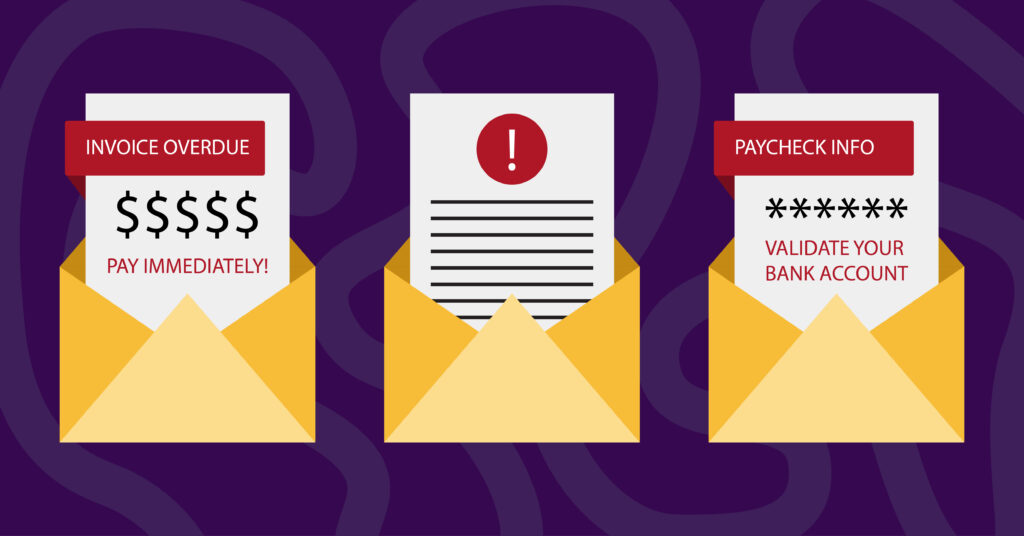On Friday, April 12, our Main Branch located at 1601 22nd Street will close at 10:00 a.m. for the move to our new headquarters.
On Friday, April 12, our Main Branch located at 1601 22nd Street will close at 10:00 a.m. for the move to our new headquarters.
On Friday, April 12, our Main Branch located at 1601 22nd Street will close at 10:00 a.m. for the move to our new headquarters.

Business Email Compromise (BEC) is a scam that seeks to defraud a company through email. Because so much of business is conducted through email, it makes this scheme highly damaging if it succeeds. According to the FBI’s 2023 Internet Crime Report, the Internet Crime Complaint Center received 21,489 BEC complaints with adjusted losses of over $2.9 billion last year alone. BEC relies on victim’s trust and carelessness, which is why it is important to be wary of the ways in which this scheme can take place.
Scenario 1: Fake invoice scheme. You receive an email from a vendor asking you to pay an overdue invoice and to send it to an updated mailing address.
Scenario 2: CEO impersonation. You receive an email from the CEO of your company. She tells you that she needs you to buy gift cards for an upcoming employee appreciation event but to not tell anyone because it’s supposed to be a surprise.
Scenario 3: Data theft. You receive an email request from HR to validate your bank account number before they can issue your paycheck.
In all of these cases, the criminals pretended to be another entity you trust such as your CEO, vendor, or coworker. To push you into responding quickly, criminals stress the urgency of the payment or action. In all of these instances, the criminal was specifically targeting one individual to advance their nefarious behaviors. Because this crime targets individuals, knowing the tactics behind BEC attacks will help you determine an email’s legitimacy.
In a BEC scheme, fraudsters rely on a few tactics that they hope the victim will not notice.
In addition to never sharing your passwords and protecting confidential information, there are a few things your business can do to strengthen its security.
Share This Article
© 2024 West Bank. All Rights Reserved. Member FDIC.
Equal Housing Lender.
© 2024 West Bank. All Rights Reserved.
Member FDIC.
Equal Housing Lender.